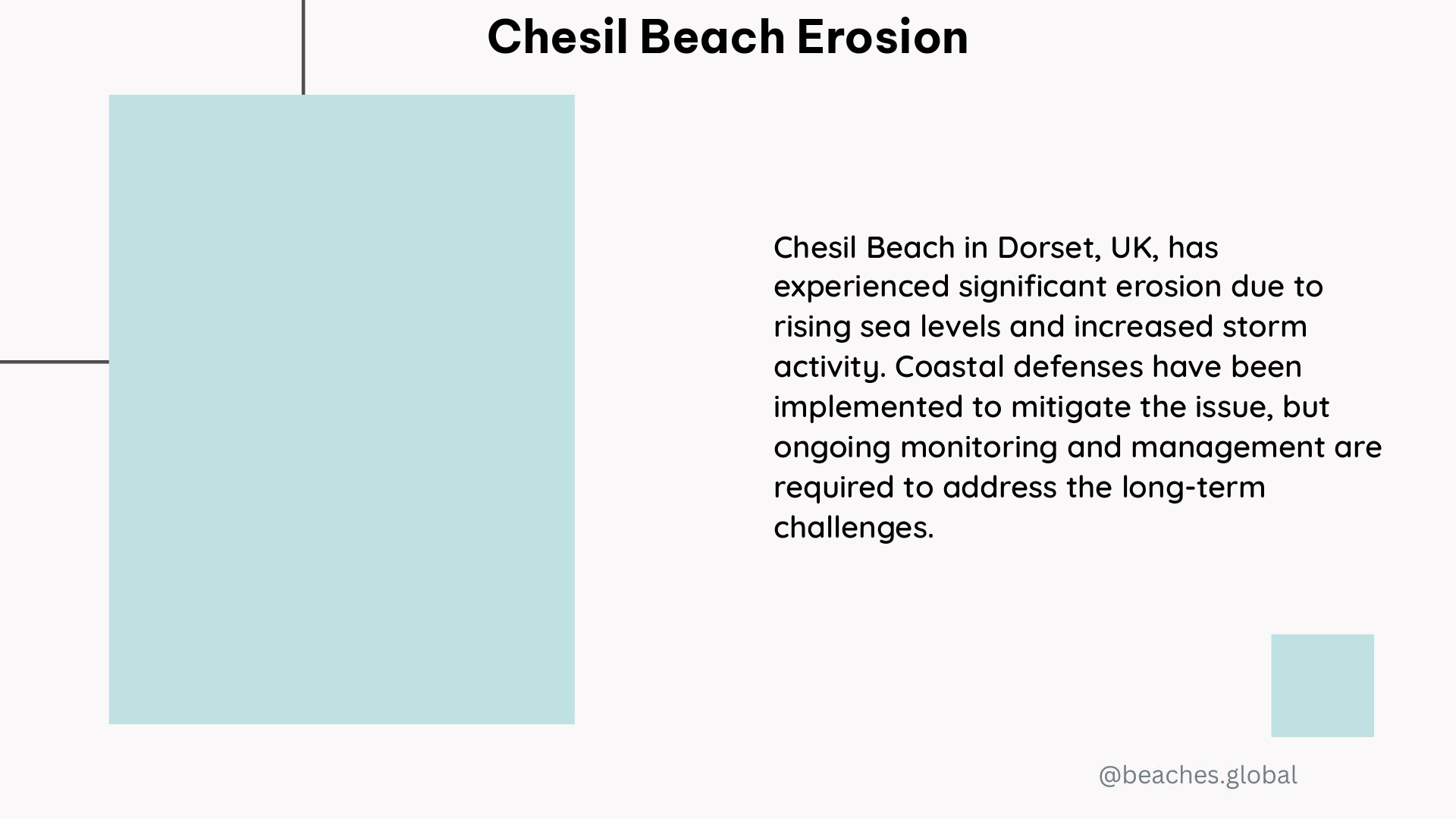Chesil Beach, a remarkable 18-mile (29km) long shingle tombolo located in Dorset, southern England, is facing the ongoing challenge of erosion. As part of the Jurassic Coast World Heritage Site, this unique coastal feature is a testament to the dynamic forces that shape our shorelines.
Understanding the Composition of Chesil Beach
Chesil Beach is composed predominantly of flint and chert from the Cretaceous and Jurassic rocks, as well as bunter pebbles, possibly from Budleigh Salterton. This diverse mix of materials contributes to the beach’s distinctive appearance and resilience against the relentless waves and winds.
The Role of Chesil Beach in Coastal Protection

The beach plays a crucial role in providing shelter from the prevailing winds and waves for the nearby town of Weymouth and the village of Chiswell. Without the presence of Chesil Beach, these communities would likely not exist in their current form, highlighting the importance of this natural coastal defense system.
The Ongoing Challenge of Erosion
Erosion has been a persistent issue at Chesil Beach for many years. Significant erosion was observed in 1930, with the beach rolling over on itself, as shingle was thrown over blown sand during the great gale of 1824. This dynamic process of the beach moving and reshaping itself is a natural phenomenon, but it also poses challenges for coastal management.
Factors Contributing to Erosion
Several factors contribute to the erosion of Chesil Beach. The sea has not yet reached its former position from before the last ice age, leaving a lake trapped behind the storm beach. Additionally, coastal recession and human intervention have depleted the beaches to the west of West Bay, reducing the supply of material to Chesil Beach through longshore drift.
The Closed Shingle System
Chesil Beach is now considered a closed shingle system, with no replenishment from outside sources. This makes the beach highly sensitive to environmental changes, such as rising sea levels, which can further exacerbate the erosion process.
Rates of Erosion
According to Ian West, Chesil Beach at Portland is moving eastward at around 15cm per year, with a much slower rate further north towards Abbotsbury. This uneven rate of erosion highlights the need for a nuanced approach to coastal management in the region.
Recent Erosion Events
In 2024, a large channel was eroded in Chesil Beach in front of Burton Mere, possibly as a result of flooding. This event underscores the ongoing challenges faced by this unique coastal landscape and the importance of continued monitoring and management.
Coastal Management Strategies
To address the erosion challenges at Chesil Beach, various coastal management strategies have been implemented or are being considered. These may include beach nourishment, the construction of sea walls or groynes, and the implementation of natural-based solutions, such as the use of vegetation to stabilize the beach.
Conclusion
Chesil Beach, a remarkable and iconic feature of the Jurassic Coast, faces the ongoing challenge of erosion. Understanding the composition, role, and factors contributing to this erosion is crucial for developing effective management strategies to preserve this unique coastal landscape for generations to come.
References:
– Bridport News – Large channel opens in Chesil Beach following flooding
– RGS – Jurassic Coast of Dorset and East Devon: Chesil Beach
– Wessex Coast Geology – Chesil Beach
– Geological Society – The Rock Cycle
– Chesil Beach – Formation
